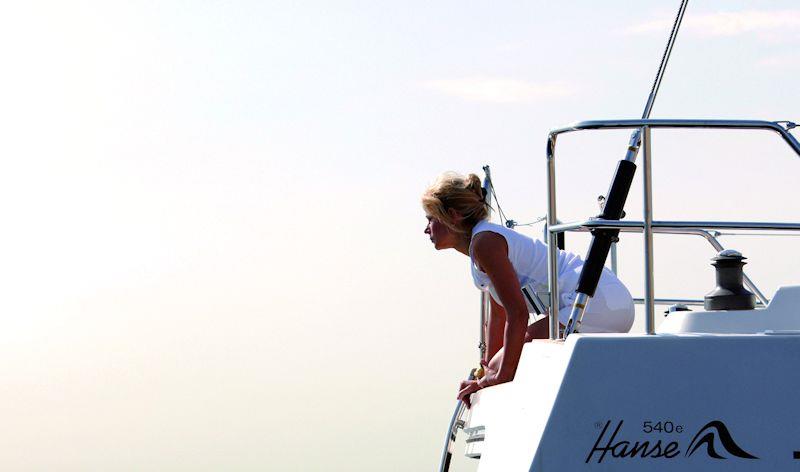
Bamar's got your back... stay!
by Aleix Escorsell 23 Apr 2020 09:00 BST

Bamar BTM backstay tensioner © Bamar
Looking to upgrade from a block and tackle system to a backstay tensioner? This blog will look at the Bamar BTV and BTM mechanical backstay tensioners and compare them with alternatives on the market.
Best known for their performance orientated furling designs, Bamar have been creating sleek, efficient sailing products for over 40 years, on their mission to partially automate sailing operations. Working at the highest level with Superyacht customers and big industrial projects, Bamar are well respected for their use of high-quality materials and well-engineered designs.
The Bamar BTV Hand-wheel mechanical tensioner is designed for small boats and wire sizes of 5 and 6mm. The simple design with folding double handles rotating around a stainless threaded stud has been given the notorious Bamar "quality" touch with the enclosed self-lubricating bushings. This reduces friction and makes tension adjustment much easier and smoother.
The Bamar BTM mechanical tensioner, on the other hand, is a very "grown-up" piece of kit which is most commonly seen on fixed backstays but can also be used for adjustable inner forestays (with quick release pins which come as an option). Designed to be used with any standard winch handle, this is a neat, low profile, reliable mechanical adjuster which is simple to operate and maintain.
A nice feature is that the winch handle clutch can also be rotated around the BTM body to allow you to have the handle protruding from whichever angle is most convenient. The body is made of a black Hardcote anodized aluminium with stainless steel parts.
The BTM range starts at 8mm wire and goes all the way up to 22mm (or Dash 60 rod). From the way this product is designed and looking at the range (see table below), you can tell that this tensioner has been developed to operate efficiently, and has served its time, on boats with 12-16mm wire backstays. The core range has been extended both upwards and - more recently - downwards.
Alternatives
The other main manual stay tensioners on the market are from Wichard and Selden.
From a look at their ranges on offer you get a real sense of Bamar's big-boat heritage (table sorted by working load).
| Brand | Model | Working Load | Pin | Wire size | Stroke |
|---|
| Bamar | BTV ‑ Model 5 | 1500 | 8 | 5 | 140 |
| Bamar | BTV ‑ Model 6 | 2300 | 10 | 6 | 200 |
| Wichard | Manual Wheel | 2800 | 12 | 5/6/7 | 170 |
| Wichard | Manual Handle | 2800 | 12 | 5/6/7 | 170 |
| Selden | Mechanical tensioner | 3000 | No Info | No Info | 250 |
| Selden | Mechanical tensioner | 3000 | No Info | No Info | 400 |
| Wichard | Manual handle with ratchet | 3200 | 12 | 7/8/9 | 220 |
| Wichard | Manual handle with ratchet | 4400 | 16 | 9/10 | 250 |
| Bamar | BTM ‑ Model 8 | 4400 | 14 | 8 | 300 |
| Bamar | BTM ‑ Model 10 | 5000 | 16 | 10 | 300 |
| Wichard | Manual handle with ratchet | 5600 | 16 | No Info | No Info |
| Bamar | BTM ‑ Model 12 | 7000 | 19 | 12 | 400 |
| Bamar | BTM ‑ Model 14 | 8500 | 22 | 14 | 506 |
| Bamar | BTM ‑ Model 16 | 12500 | 25 | 16 | 506 |
| Bamar | BTM ‑ Model 19 | 16000 | 28 | 19 | 506 |
| Bamar | BTM ‑ Model 22 | 20400 | 35 | 22 | 506 |
Selden have one size of mechanical tensioner with a short and long stroke version for wire sizes up to 7-8mm. above this size customers are moved to more expensive hydraulic systems. Wichard has a manual option, with ratchet handle, up to 10mm wire / 16mm pin and whilst it is not stated, we assume a stroke of 250mm.
The Bamar BTV is comparable to the Wichard units in that it involves the use of handles, or a wheel, to rotate around a threaded stud, whereas the Selden tensioner uses a winch handle clutch which is the same as the Bamar BTM.
The BTM model 8 is similar in recommended wire size to the Selden, but two key factors highlight the difference between these two units:
The gearing ratio in the Bamar BTM is much higher than in the Selden unit. Based on a standard 250mm winch handle, to obtain a tension in the backstay of 4000kg requires 15kgs of force applied on the BTM, whereas the Selden would require almost 20kgs of applied force.
What really sets the BTM stay tensioner apart is that both ends/studs extend and retract. This means that it takes half the rotation to achieve that same change in tension.
So, 25% less force required to do twice the work - that is why the Bamar BTM has got your back!
Find out more about the Bamar BTM